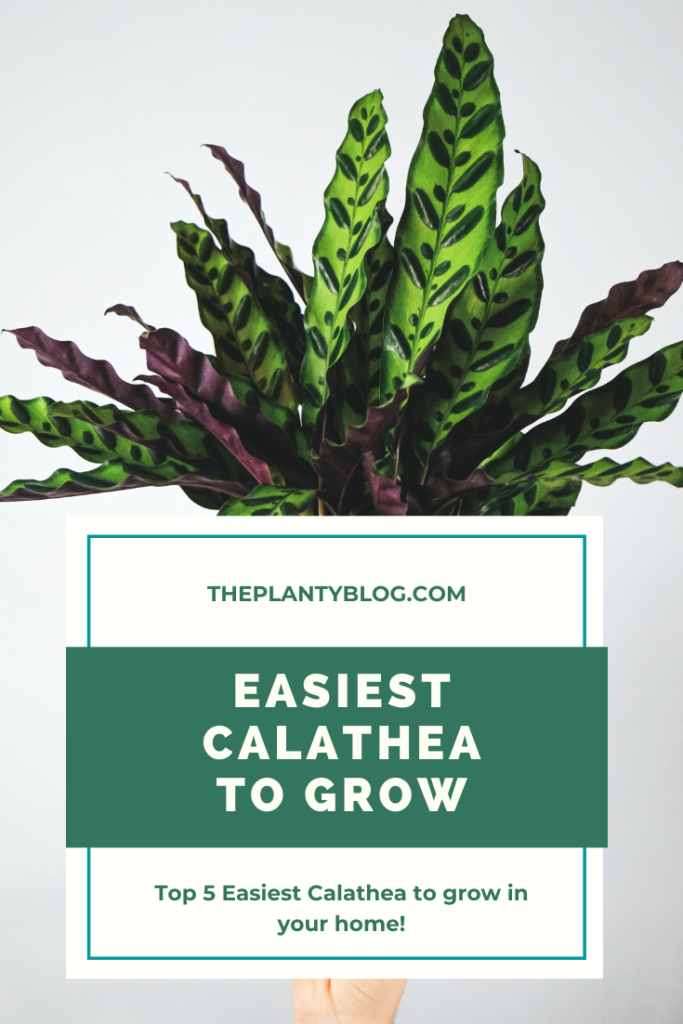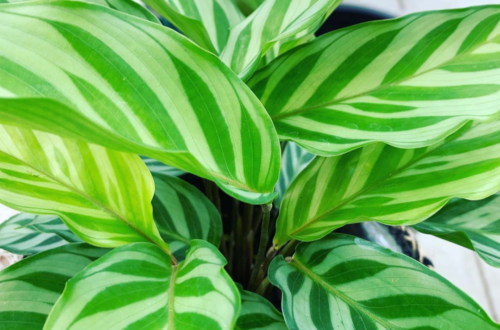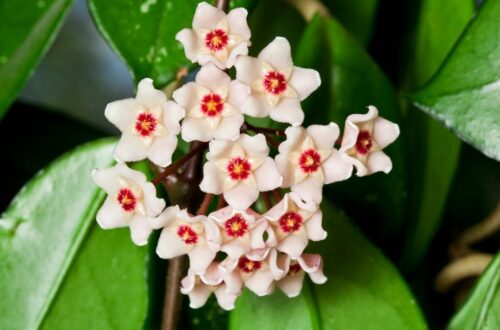
Calathea: Top 5 Easiest Calathea
A list of the Top 5 Easiest Calathea…if you can even call them that!
You cannot deny that Calatheas are gorgeous houseplants, but very few people will ever call them “easy plants”. You may have heard many people call Calatheas “fussy” or “divas”, but are there any of these gorgeous tropical foliage plants easier than the others? Which type is the easiest to grow?
The easiest Calathea to grow is the Calathea Freddie (Geoppertia Concinna or Calathea Concinna) that is a bit more forgiving with humidity levels and will forgive the occasional late watering. Other easier Calatheas to care for include the Calathea Lancifolia, the Ornata “Beauty Star”, Calathea Ornata, and the Mackoyana.
I have owned (at some point or another) just about every popular Calathea species on the market so much of this is my own personal experience as well as the structure of the plant that makes it a bit more tolerant of household conditions than some of the really sensitive Calathea varieties out there. We will go through the top 5 easiest Calatheas to grow (with photos) and give you some care tips to help them thrive in your home.
Are Calatheas Easy Houseplants?
Calatheas in general are not considered easy plants to grow. Most people consider plants that can tolerate a late watering, moderate to lower humidity requirements and low light “easy plants”. This is likely because they require less daily or weekly care. Calatheas, while many varieties are low light tolerant, do enjoy higher humidity levels. They will develop crispy tips if humidity levels are lower or if you allow the soil to dry out. This is because they are tropical plants with thinner, delicate foliage that do not retain water like a more succulent plant. With that said, you may have a different opinion about whether a plant is easy than someone else. Ultimately, you never know if you will find a plant truly easy unless you try it out!
The biggest problem with Calatheas is that they are absolutely stunning and will entice people to buy them from the store without understanding their care requirements. They will bring them home, swiftly kill the plant or find it a crispy, shriveled mess and then vow to never care for Calatheas again.
For a complete guide on Calatheas, check out Calathea 101 and Secrets to Growing Beautiful Calatheas. If you are new to caring for these plants, there are a few hardier species I’d recommend after owning just about every type of Calathea at some point or another.
Easiest Calatheas to Grow (In Order)
If you have never owned one of these beautiful houseplants before, or if you would like to dip your toes into the waters of Calatheas, I have compiled a list of the top 5 easiest species that I have encountered over my time collecting houseplants.
1. Calathea Freddie (Geoppertia Concinna or Calathea Concinna)
This is by far one of the easiest Calatheas that I’ve encountered. True, it doesn’t have that striking purple backing to its leaves, but I find the foliage pattern is just as stunning with its chevron-like leaves. Besides, it certainly looks better than having a bouquet of crispy leaves in your home. This plant is much more tolerant of normal household humidity levels. Did I completely neglect it? Definitely not, but I had been a tad late to water it here and there with no severe consequences.

Calathea Freddie Care:
Water: When soil is nearly dry but not completely dry
Humidity: Will tolerate around 40-50%
Light: Tolerant of lower light conditions, but prefers medium light around 100-400 Foot Candles
2. Calathea Lancifolia
Also called the Rattlesnake plant, this plant is an absolutely beautiful addition to your home décor or houseplant collection if you are looking to try an easier Calathea. It has long and wavy lance-like leaves with the classic aborigine backing to the leaves and a spotted green pattern. What I love most about this one is the very “dramatic” way it moves its long leaves in the evening as many Marantacae prayer plants do. Very few people struggle with the Lancifolia, and you will find it is just as tolerant of typical household conditions as the Calathea Freddie. In fact, I would keep these two side-by-side in my living room and give them identical care without any issue.

Calathea Lancifolia Care
Water: When the soil is nearly dry but not completely dry
Humidity: Prefers over 60% but will tolerate around 40-50%
Light: Tolerant of lower light conditions but prefers medium light from 100-400 Foot Candles.
3. Calathea Beauty Star (Calathea Ornata “Beauty Star”)
This plant is appropriately named, it is truly beautiful. If you are willing to give it a little bit extra attention, you will really enjoy the ornate foliage pattern in your home. I would say this one is a bit of a step up from the Lancifolia, particularly when it comes to watering it on time. Try not to leave this one too long without a drink. I would say the biggest thing to watch out for with this variety is that the creamier green tends to hide any pests it may get, so make sure to check on the tops of the leaves very closely. Otherwise, this variety isn’t too fussy and much easier than several other varieties. The leaves are a bit thicker and almost waxy on the top, making it a little bit more hardy to household humidity levels.

Calathea Beauty Star Care
Water: When the soil is nearly dry but not completely dry
Humidity: Prefers over 60% but will tolerate levels around 50%
Light: Medium light levels are a bit better for this one, but you may have some luck in lower light. 200-400 Foot Candles is ideal.
4. Calathea Ornata
This may be an unpopular opinion, but this Calathea is far from the hardest to care for. While not as easy as Calathea Lancifolia or Freddie, with a bit of extra effort you can have a really happy and thriving Calathea Ornata. The Ornata has a beautiful dark green foliage that can even look almost black in some light, with stunning bright pink variegation in line-like patterns. It is very tolerant of lower light conditions and can even tolerate typical household humidity as long as it isn’t excessively dry. Like the Beauty Star, I would keep a close eye on this Calathea for pests, particularly thrips since they are also very dark and can camouflage quite easily against the dark leaves. If you stay on top of the watering, this Calathea doesn’t require extensive environmental changes.

Calathea Ornata Care
Water: When the soil is nearly dry but not completely dry
Humidity: Prefers over 60% but will tolerate levels around 50%
Light: Tolerant of lower light levels but would prefer medium light between 100-400 Foot Candles.
5. Calathea Mackoyana
When I originally wrote this, the Velvet Touch ranked number five on my list. I have since changed my opinion. The Calathea Warscewiczii is a solid runner up. However, after a series of aggressive pest encounters, I have bumped it from the list. The Mackoyana has absolutely breathtaking leaves on both sides. The tops of the leaves have an intricate border with a stunning leaf pattern and the backside is just as stunning, but purple. The tops of the leaves are slightly more waxy which gives it better protection from excessive water loss. As long as you follow my Calathea care guide, this one should not give you any tremendous issues. Like most on this list, pests are a bit trickier to spot on these patterned leaves so stay on top of your pest prevention routine. Otherwise you can certainly enjoy this beautiful plant with very minimal drama.

Calathea Mackoyana Care:
Water: When the soil is nearly dry but never completely dry
Humidity: Prefers over 60% but will tolerate levels around 50%
Light: Medium light is preferred with around 200-400 Foot Candles.

Additional Resources:
- Why are the tips of my Calathea turning BROWN?
- Calathea Alternatives for Those Who Love Calathea but Don’t Love Drama
- Kaylee Ellen: Things to Know Before Buying a Calathea
This article was originally published in 2021, but has been updated for relevant, fresh and up-to-date information.

